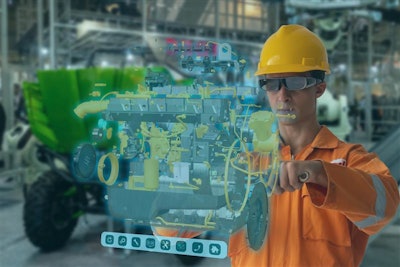
Pandemic-related supply chain upheaval has affected countless industries and businesses over the last two years, but few product shortages have been as impactful as the global semiconductor crisis. Now, well into early 2022 and with delays continuing, we’re still not yet out of the woods.
Late last year, the Biden Administration unveiled plans to request semiconductor inventory and sales details from key supply chain participants in an effort to “improve trust and transparency within the supply chain.” The goal was to develop a better understanding of what issues remain in the semiconductor supply chain, such as the Coronavirus disease (COVID-19)-related manufacturing delays or hoarding practices and how the industry can more effectively tackle these issues. The administration has since followed up on those efforts, recently announcing the semiconductor industry has invested tens of billions of dollars in U.S. production since last year. However, issues remain.
It’s been more than a year since the chip shortage began, yet far too many companies still haven’t demonstrated a coherent plan to overcome the reduced volume. With that in mind, below are three steps businesses can take to help them navigate the semiconductor crisis.
1. Assess the issue
The first step toward addressing the problem is to determine its true scale. Supply chain mapping is a great exercise to identify the key players involved throughout the supply chain, holistically and in granular detail, including contracted service providers, sub-contractors, holding and transfer locations. Through this exercise, businesses can gain a detailed insight into who is involved in the supply chain, how goods are moved and managed, and more importantly, where the risks and pinch points are. In the semiconductor example, that component’s supply chain runs primarily through manufacturing outposts in Asian countries such as China, Vietnam, and Malaysia.
The ongoing impact on global trade as a result of the COVID-19 pandemic is forcing semiconductor plants to operate at reduced capacity, ultimately reducing the availability of semiconductors in the market. But, there are many other dynamics, such as changing international trade agreements, which also impact the cost and availability of products. Through a detailed mapping process, a company may identify an unhealthy reliance on key supply chain elements, consequently empowering business leaders to take positive, proactive action to spread risks in critical areas.
It’s important to remember that supply chain risk is not static — logistical dynamics are constantly evolving. Companies with a firm grasp of their supply chains can track and adjust to budding problems before they turn into serious issues. Future risks across a supply chain may involve environmental issues, natural disasters and political or social change, to name a few, but if a company wants to minimize the potential impact of these risks, they must balance the likelihood and impact of such events proactively throughout their supply chain.
By understanding the changing dynamics of these risk areas and proactively forecasting future changes, businesses can make more informed strategic decisions. That may mean increasing stock holdings, diluting risk through multiple sourcing, or any number of other potential solutions. But with each of these decisions, there is a counterbalance to be considered – increasing inventory leaves may present a greater risk of stock theft, for example. All these different dynamics must be accounted for when companies conduct a strategic review of their supply chain.
2. Understand how the shortage is going to impact business
Once external problems are identified through risk analysis, businesses must look inward and analyze how the shortage impacts their business model. First off, organizations should decide what type of changes they want to make: long-term or short-term. This decision could rely on internal dynamics, for instance, whether a company has the necessary capital to invest in long-term solutions or on risk analysis, such as whether a company believes a shortage won’t be long-lasting enough to justify wholesale changes.
Once its strategic goals are clearly outlined, a company should seek to understand the market by identifying shifts in demand and changing consumer needs. In doing so, it can determine where its products and services align with market opportunities, then adjust business strategy to generate the best possible return. Some sample strategic changes might include pricing adjustments or changing product manufacturing mix to account for new market priorities.
In the case of the semiconductor shortage, a company might observe through market analysis that one of its products had grown in popularity amid the pandemic. This occurred in 2020 with laptops, which were in much higher demand than usual thanks to the proliferation of remote working and schooling. In this situation, an agile consumer tech company might have evolved to focus on producing more laptops rather than less in-demand products, such as radios, that would have used up scarce, valuable semiconductors without providing the same return. Monitoring market dynamics for opportunities like this can drive business wins for companies, even amid a challenging economic climate.
3. Build and implement an approach
Once businesses have a holistic view of the internal and external challenges they face, it’s easier to move forward confidently with wholesale changes that can lead to long-term growth and stability. One such example is the opportunity to create more collaborative relationships with business partners throughout the supply chain. Many companies remain anonymous to their suppliers and have a purely transactional business agreement. By becoming more of a strategic partner, businesses can open the door to a host of benefits such as establishing common goals, agreeing on long-term pricing strategies and guaranteeing long-term supply.
One topical strategy is embracing the circular economy, which is now routinely done in the tech and car manufacturing sectors, among many others. The circular economy has added tremendously to corporate strategic objectives. Many are now recycling and repurposing semiconductor materials to reduce their dependency on unpredictable supply chains while also progressing corporate sustainability goals.
One lesson learned has shone through throughout the pandemic: stagnant companies cannot succeed in a continually changing global environment. The semiconductor shortage serves as a warning to industries about the importance of having a flexible, dynamic and resilient supply chain and the business opportunities that come with establishing it before a crisis hits.




![Pros To Know 2026 [color]](https://img.sdcexec.com/mindful/acbm/workspaces/default/uploads/2025/08/prostoknow-2026-color.mduFvhpgMk.png?auto=format%2Ccompress&bg=fff&fill-color=fff&fit=fill&h=100&q=70&w=100)







![Pros To Know 2026 [color]](https://img.sdcexec.com/mindful/acbm/workspaces/default/uploads/2025/08/prostoknow-2026-color.mduFvhpgMk.png?ar=16%3A9&auto=format%2Ccompress&bg=fff&fill-color=fff&fit=fill&h=135&q=70&w=240)





